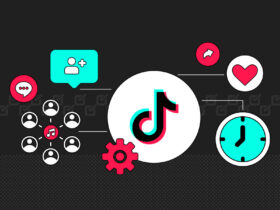With quantifiable outcomes and the ability to reach highly focused audiences, online advertising has emerged as a key instrument in digital marketing. But its use is frequently misinterpreted or done badly. Target group segmentation enables better engagement rates and tailored ad content. Campaign execution include producing engaging creative assets that complement platform best practices and audience preferences. Over time, A/B testing aids in improving the strategy. Setting up a campaign requires careful design of budgets, bid strategies, targeting parameters, and ad sets. Errors at this point may result in poor performance or unnecessary expenses. Since an excellent ad may lead to a landing page that loads slowly or is irrelevant, advertisers must also take into account the user experience after the click. If the ad is unable to support required activities, it may underperform.
With the use of detailed data from systems such Google Ads or Meta Ads, marketers can recognise patterns, pinpoint failing categories, and dynamically reallocate spending. Redistributing funds, improving ad wording, modifying targeting parameters, and modifying bid tactics are all examples of optimisation. With many platforms providing capabilities like audience growth, dynamic creative optimisation, and automated bidding, machine learning is essential to optimisation.
Reporting, which offers data on campaign health, return on investment, and opportunities for development, is essential to advertising ads online. A glimpse of the campaign’s health may be given to stakeholders using customised dashboards created with programs like Excel or Google Data Studio. With laws like the CCPA and GDPR mandating marketers to manage user data responsibly, security and data privacy are increasingly essential components. Since ethical advertising acts as the brand’s silent ambassador, it is crucial in a world where privacy is a concern.

Pixel monitoring, UTM parameters, convert APIs, and retargeting tags are all components of the technological infrastructure that supports online advertise. Precise targeting, enhanced personalisation, and better attribution modelling are made possible by a fully integrated tech stack that links analytics tools, CRM platforms, and best advertising platforms. Multi-touch attributing (MTA) and data-driven approaches offer a comprehensive perspective of the customer experience, assisting marketers in understanding the efficacy of their ad spend across various channels and devices. Traditional last-click attribution models, on the other hand, frequently undervalue upper-funnel efforts.
High-quality images, compelling writing, and interactive formats are essential for brand distinctiveness in online advertising, which is placing an increased emphasis on creative strategy. Increased participation and conversion rates may be achieved with dynamic creatives that change based on viewer behaviour. With networks including YouTube, Instagram, and the social networking sites enabling marketers to capitalise on influencers’ reputation and reach for natural, less invasive messaging, influencer and content-based advertising is also becoming more popular. When these tactics are used effectively, they may produce significant outcomes.
Online advertising strategies require careful budget management, which includes distribution across platforms, audience demographics, and creative modifications. Setting ceilings, thresholds, and bid limitations stops overspending, while budget pacing tools guarantee equitable expenditure distribution. It’s critical to keep up with developments in the internet advertising market, such as cookieless monitoring, first-party data, and offline advertising networks. Spending is shifting towards closed-loop ecosystems with rich purchase data and high-intent audiences as a result of these shifts, necessitating CRM integration and data hygiene.
Through the creation of ad text, the recommendation of innovative combinations, and the automation of performance reporting, artificial intelligence and machine learning have transformed internet advertising. Although human supervision is essential, automation frees up teams to concentrate on strategy and innovative thinking. Higher conversion rates are achieved by integrating e-commerce elements into ad networks, such as shoppable advertisements on Google Search and Instagram, which shorten the funnel and lower friction. This enables companies to bridge awareness and transaction by transforming advertisements into shopfronts.
Online advertising strategies seldom reach their optimal performance right away, therefore success demands a philosophy of ongoing learning. Since every campaign provides data and chances for improvement, iteration, testing, and adaption are essential. Dynamic and successful efforts are ensured by establishing an organisational culture that emphasises data literacy, creative testing, and agile execution. Advertising on the internet is a sophisticated, data-driven process that starts with planning, needs to be executed precisely, and benefits from ongoing optimisation. Gaining proficiency in the science and the art of internet advertising will motivate people to take action, cultivate a devoted following, and promote steady development.







Leave a Reply